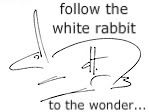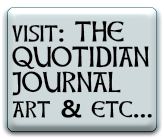"In theory, goodness, truth, and beauty—traditionally known as the "transcendentals," because they are the three qualities that God has in infinite abundance—are equal in dignity and worth…The thinker who has helped me most along these lines is the twentieth-century theologian Hans Urs von Balthasar. His argument—and it is a rather unsettling one—is that of the three transcendentals, beauty is the one that is least troubled by our fallen condition. In a world plagued by sin and error, he says, truth and goodness are always hotly contested. How do you live righteously? What is the truth? As we debate these matters, we have axes to grind…Beauty must serve some other end; it is not an end in itself. But the transcendentals were always understood as infinitely valuable, as ends in themselves. When it comes to beauty, however, we are afraid to assert that much. We feel the need to harness it, because beauty is unpredictable, wild. Here's how I have tried to comprehend these deep matters. If you think about these three transcendentals in relationship to our human capacities, what are the faculties that correspond to these three transcendentals? Goodness, I would say, has to do with faith, the desire for holiness. Truth is pursued by reason. We are familiar with that pairing: faith and reason. That's standard-issue language in western tradition. But what about the third element? What faculty does beauty correspond to? I would suggest that it is the imagination. The imagination is the faculty honed to apprehend beauty and unfold its meaning. How often do we say the Judeo-Christian tradition is a tradition of faith, reason, and imagination?...Beauty allows us to penetrate reality through the imagination, through the capacity of the imagination to perceive the world intuitively…The intuitive perception of meaning that art provides helps us to see that imagination is akin to reason: both seek truth through the apprehension of order and pattern. Art employs beautiful forms to generate objects that penetrate reality…A work of art doesn't invent truth, but it does make it accessible to us in ways that are not normally available because words and images have been tarnished by overuse or neglect. Art fails when it merely tells us what we already know in the ways that we already know it. That is why art is so deeply related to the prophetic dimension and the place where it connects to truth. That prophetic shock, that challenge to complacency, that revelatory reconfiguration of the way things are, gives us a truer picture of the way that the world is…Thus goodness without beauty is moralism, holier than thou. At the same time, it is only fair to say that beauty without truth is a lie."
from "The Wound of Beauty" in Image: Art, Faith, Mystery (Winter 2007-08, #56), 3-6
this site has moved...
-
come and follow the whimsy at it's new home @
*http://webofwhimsy.postach.io/ *
11 years ago























No comments:
Post a Comment